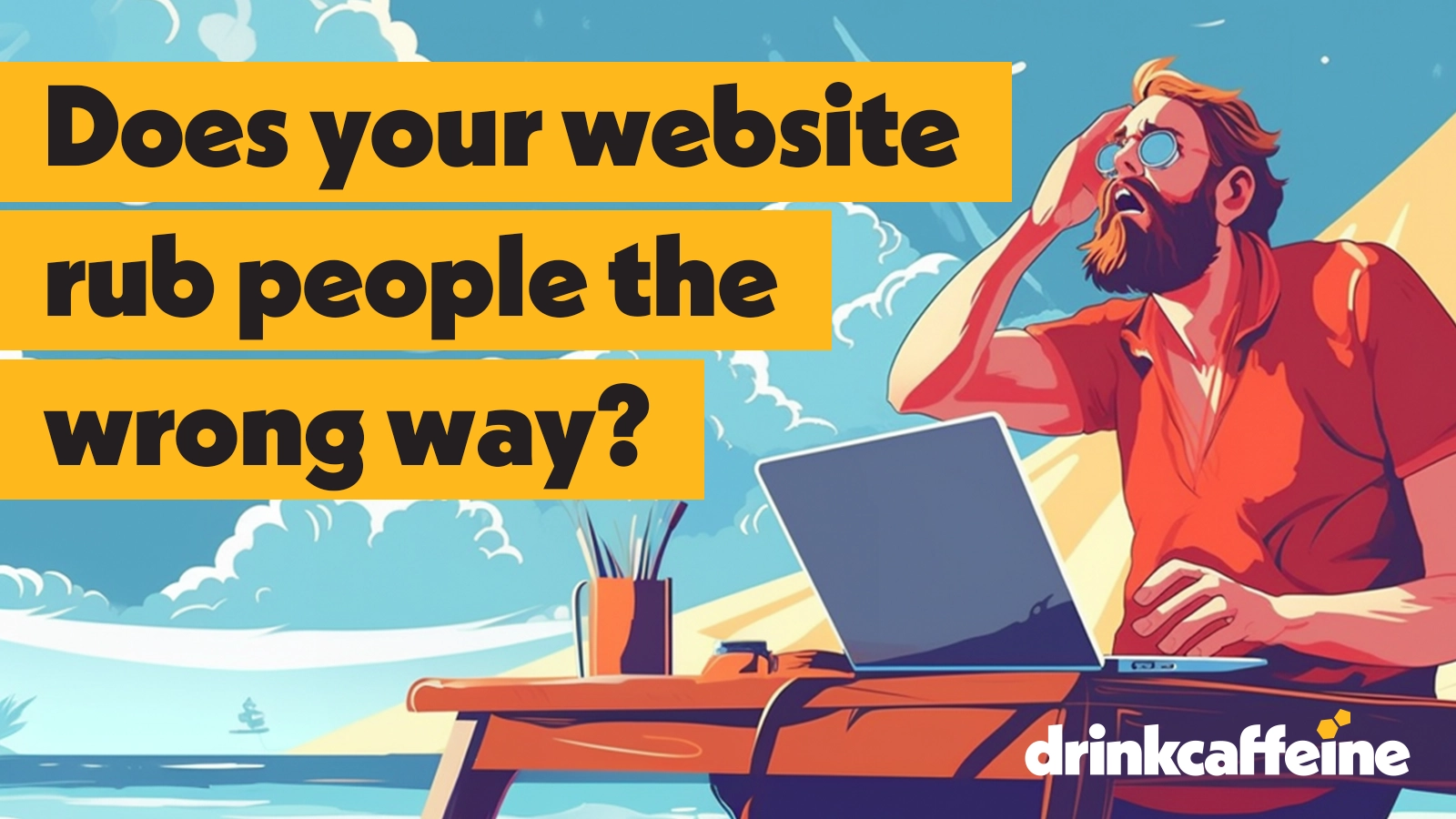Sometimes websites have good SEO, a good message, and even good intentions, but they can’t seem to close deals and complete transactions.
Users keep bouncing out, abandoning forms, hesitating to Buy Now, and in general dropping the website like it was 3rd period Latin.
In fact, around 55% of shoppers indicate that friction at checkout can make them stop a purchase in its tracks. But friction can be smoothed over. The key is to identify the perpetrators.
Here’s a list of the usual suspects.
The 5 Usual Suspects in website friction – and how to handle them
Delays.
Site loading time and page loading speeds are the best examples. Also: painfully slow checkout processes, and endlessly spinning pinwheels of death.
Where to start: There’s no hiding from Google’s Core Web Vitals, whose evaluative criteria places strong emphasis on speed. So make sure you optimize images. Adjust files sizes and types. Reduce HTTP requests. Use caching – carefully and accurately. Work with a front end developer who solves Javascript/jQuery problems.
Trust.
Some sites try to close a transaction without sharing anything about themselves and sending the necessary trust signals. Sort of like a bad first date.
Where to start: Fortify your About Us content. Use social proof (just 3-5 powerful testimonial quotes; less is more). Use reviews and ratings, if you have them. Feature credentials, industry memberships, and authored content. List a mailing address in Contact – some people still want to know where you work.
Errors.
This includes outdated or inaccurate content, incorrect product data or pricing information, invalid contact information, broken links, and so forth.
Where to start: Technical errors happen to all sites. Do an error message analysis and try to determine the errors that are most strongly linked to the site’s conversion objectives and fix those first.
Clunky web forms.
They’re out there. We’ve all encountered them: Forms with drop down menus that don’t drop down. Meaningless error messages that don’t provide redirection (our favorite: “Validation Problem Occurring”). Inappropriately timed cross selling and upselling. And so forth.
Where to start: Concision matters, so simplify. Anecdote: a client with a 10-field form reduced it to four fields and completions increase more than 150% (Thanks, CXL) Stick to 1-column forms when humanly possible. Make error messages constructive. And make sure the mobile UX is solid.
Poor content.
By “poor” we mean wrong for your audience(s). Quality content – in the form of highly relevant language, images, video, audio, graphics, animation, and so forth – needs to meet users at their own level and bring them deeper into conversion.
Where to start: If you choose one thing, start with the quality of imagery. Consumers value quality images more than anything – including product data, descriptions, and ratings and reviews – when making a purchase decision.


